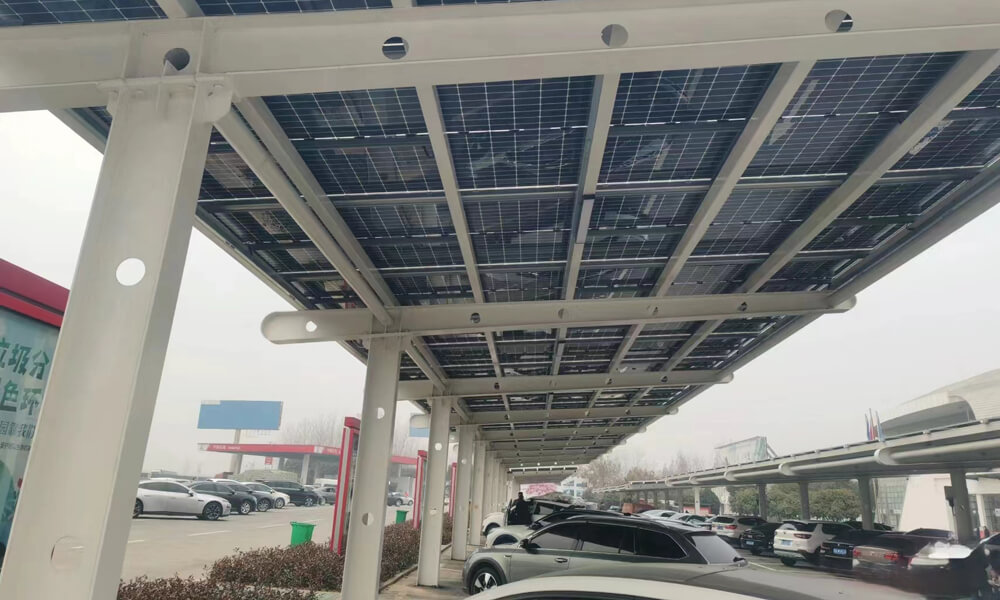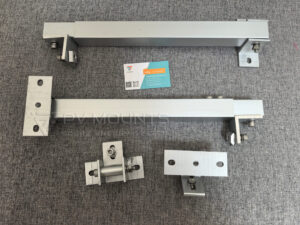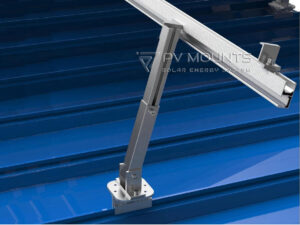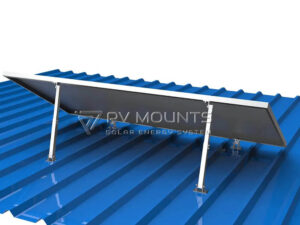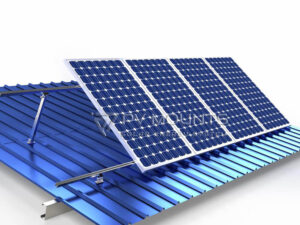Solar carports are an innovative amalgamation of renewable energy technology and traditional car parking solutions. They utilize photovoltaic (PV) panels to transform sunlight into electricity, providing a dual function of offering covered parking while generating energy. This concept has gained traction among environmentally conscious individuals and organizations looking to reduce their carbon footprint without sacrificing land or aesthetic appeal. So we will discover how much is a solar carport.
Adopting solar carports brings a plethora of benefits, not just environmentally but also economically. Environmentally, they contribute significantly to reducing greenhouse gas emissions by harnessing solar energy, a clean and inexhaustible source. Economically, they offer a reduction in electricity bills over time, thanks to the generated power used directly by the property, with surplus energy often sold back to the grid. Additionally, they increase the property value, making them a wise investment for the future.
Table of Contents
1. Factors Influencing the Cost of Solar Carports
1.1 Size and Capacity
The size and capacity of a solar carport directly influence its cost. Larger carports that accommodate more vehicles and are equipped with more solar panels will naturally require a higher initial investment. The capacity not only refers to the physical size but also to the electrical output, measured in kilowatts (kW), dictating how much power the carport can generate.
1.2 Materials and Durability
The choice of materials for both the structure and the solar panels plays a crucial role in determining the cost. High-quality, durable materials such as galvanized steel for the frame and high-efficiency solar panels might have a higher upfront cost but offer better longevity and performance, leading to greater savings over time.
1.3 Type of Solar Panels
The type of solar panels chosen for a carport can vary, including monocrystalline, polycrystalline, or thin-film panels. Monocrystalline panels, known for their high efficiency and sleek appearance, tend to be more expensive than the other types. The choice depends on the balance between cost, aesthetic preference, and the desired efficiency.
1.4 Installation Complexity
The complexity of the installation process can also affect the overall cost. Factors such as the carport’s location, the need for site preparation, and the integration with existing electrical systems can vary widely. Complex installations in challenging locations or those requiring significant electrical upgrades may incur higher costs.
2. Types of Solar Carports
Solar carports represent a fusion of functionality and sustainability, providing shelter for vehicles while generating renewable energy. This innovative solution has found applications in both residential and commercial sectors, each with distinct characteristics tailored to specific needs and objectives.
2.1 Residential vs. Commercial Solar Carports
The distinction between residential and commercial solar carports lies in their scale, complexity, and the ancillary features they offer.
Residential Solar Carports
Residential solar carports are designed to blend seamlessly with home aesthetics while offering a practical, eco-friendly energy solution. Typically accommodating one or two vehicles, these structures are less complex than their commercial counterparts. They serve dual purposes: protecting vehicles from the elements and reducing household energy costs through solar power generation. Residential carports often become an extension of the home’s living space, reflecting personal style and environmental values.
The simplicity of residential solar carports does not detract from their efficiency. They are engineered to optimize the available space and sun exposure, ensuring that homeowners can maximize their investment. The integration of solar carports into residential settings underscores a growing trend towards sustainable living, where every square foot of space is utilized to contribute to energy independence.
Commercial Solar Carports
Commercial solar carports are a testament to scalability and multifunctionality. These installations cover larger areas, accommodating fleets of vehicles, and are commonly found in business parks, shopping centers, and public institutions. The scale of commercial carports allows for significant energy production, which can offset a substantial portion of the energy demands of the accompanying facilities.
One of the hallmark features of commercial solar carports is the integration of electric vehicle (EV) charging stations. As the adoption of EVs accelerates, businesses are increasingly incorporating charging infrastructure into their solar carport projects. This not only provides a valuable service to employees and customers but also enhances the site’s sustainability credentials.
2.2 Customizable Features and Designs
The versatility of solar carports is evident in the wide array of customizable features and designs available to both residential and commercial clients. These adaptations ensure that each installation meets the specific aesthetic and functional requirements of its setting.
Adjustable Tilt Angles
One key feature is the ability to adjust the tilt angle of the solar panels. This customization enables the optimization of solar energy capture by aligning the panels with the sun’s trajectory across different seasons. Adjustable tilt angles can significantly impact the efficiency of energy generation, making this feature a crucial consideration in the design phase.
Integrated Lighting
Solar carports can also incorporate integrated lighting systems, enhancing safety and visibility during the evening hours. This lighting can be powered by the solar panels themselves, creating a self-sustaining illumination system that adds to the carport’s utility without increasing energy costs.
Varying Roof Designs
The roof design of solar carports is another area where customization plays a key role. From flat to gabled roofs, the design can be chosen to complement the surrounding architecture and meet specific spatial or aesthetic preferences. Innovative materials and architectural techniques allow for the creation of visually striking structures that serve as both functional installations and design statements.
The integration of these customizable features into solar carport designs not only enhances their functionality but also allows for a higher degree of personalization. Whether for a residential driveway or a commercial parking lot, solar carports can be tailored to fit the unique character of any space, making them a versatile and appealing option for those looking to invest in renewable energy infrastructure.
3. Cost Breakdown
Navigating the financial landscape of solar carport installations involves a thorough understanding of the initial investment, potential incentives, and ongoing operational costs. This comprehensive cost analysis ensures that individuals and businesses can make informed decisions, balancing upfront expenditures against long-term savings and benefits.
3.1 Initial Investment
The journey towards harnessing solar energy through a carport begins with an initial investment that encapsulates several critical components. This investment is not a one-size-fits-all figure but varies significantly based on project specifics.
Materials
The cost of materials, including solar panels, mounting hardware, and structural components, constitutes a significant portion of the initial investment. The choice of materials can greatly influence both the cost and efficiency of the installation, with high-efficiency panels and durable materials often commanding a premium.
Labor
Labor costs, encompassing the installation and electrical wiring of the solar carport, vary by region and the complexity of the project. Professional installation ensures optimal performance and compliance with local codes and regulations but adds to the upfront cost.
Permits and Regulations
Securing the necessary permits and adhering to local building regulations are essential steps that incur costs. These legal requisites can vary widely between jurisdictions, impacting the overall investment.
Site Preparation
Site preparation, including any necessary landscaping, foundation work, or modifications to existing structures, is an additional cost factor. The extent of preparation required depends on the condition and layout of the installation site.
3.2 Potential Tax Credits and Incentives
Recognizing the environmental and economic benefits of solar energy, various government entities offer incentives to offset the initial investment.
Federal Tax Credits
In many countries, federal governments provide tax credits for solar energy installations, directly reducing the amount of tax owed. These credits can cover a significant percentage of the installation cost, making solar carports more financially accessible.
State-Specific Rebates
State or regional incentives can further reduce the cost. These rebates often vary in value and availability, encouraging local adoption of solar technologies.
Utility Company Incentives
Some utility companies offer incentives for solar installations, including buyback programs for excess energy produced, further enhancing the financial viability of solar carports.
3.3 Maintenance and Operational Costs
While solar carports are lauded for their low maintenance requirements, some ongoing costs should be anticipated to ensure optimal performance.
Cleaning and Maintenance
Periodic cleaning of the solar panels is essential to maintain efficiency, as dirt and debris can block sunlight. Additionally, occasional maintenance checks and component replacements ensure the system’s longevity and reliability.
Operational Costs
Beyond maintenance, operational costs are minimal. The renewable nature of solar energy means there are no ongoing fuel costs, and many systems are designed to operate autonomously, reducing the need for active management.
In summary, the financial journey of installing a solar carport encompasses an array of costs and incentives. The initial investment, while substantial, can be mitigated by government and utility incentives, with the added benefit of low ongoing operational costs. This cost structure, combined with the environmental and economic benefits of solar energy, makes solar carports a compelling proposition for those looking to invest in sustainable infrastructure.
4. Long-Term Benefits
4.1 Energy Savings
One of the most compelling benefits of solar carports is the substantial energy savings they offer. By generating electricity on-site, homeowners and businesses can significantly reduce their reliance on grid-supplied power, leading to lower utility bills.
4.2 Increased Property Value
Investing in a solar carport can also increase a property’s value. Properties with solar installations are often more attractive to buyers, commanding a premium over comparable properties without solar energy capabilities.
4.3 Environmental Impact
Beyond the financial benefits, solar carports contribute positively to the environment by reducing carbon emissions and promoting renewable energy use. This impact aligns with growing societal efforts to combat climate change and preserve natural resources for future generations.
5. Financing Options
5.1 Loans and Leasing
Several financing options are available for those looking to install a solar carport, including loans and leasing programs. These financial products can help spread the cost over time, making solar carports more accessible to a wider audience.
5.2 Government Grants and Subsidies
In addition to tax credits and incentives, government grants and subsidies can further reduce the cost of solar carport installations. These programs are often targeted at promoting renewable energy projects and can provide significant financial support.
6. Case Studies
6.1 Residential Success Stories
Highlighting residential success stories can provide valuable insights into the real-world benefits and challenges of solar carport installations. These case studies often reveal tips for maximizing savings and satisfaction with the project.
6.2 Commercial Implementation Examples
Commercial solar carport projects offer lessons in scalability, integration with business operations, and the potential for public or employee engagement with renewable energy initiatives. These examples can serve as a blueprint for other businesses considering similar investments.
7. Future of Solar Carports
7.1 Technological Advancements
The future of solar carports is closely tied to advancements in solar technology and energy storage solutions. Innovations in these areas can enhance the efficiency, capacity, and overall value of solar carport installations.
7.2 Market Trends
Understanding current market trends, including consumer demand, regulatory changes, and technological developments, is crucial for anticipating the direction of the solar carport industry. These trends can inform decision-making for both potential buyers and industry stakeholders.
8. Conclusion
Opting for a solar carport investment demands meticulous evaluation of expenses, advantages, and the range of choices at hand. Grasping the elements that affect both pricing and prospective economic returns enables property owners to arrive at a well-informed choice, one that resonates with their fiscal and ecological aspirations.
For those interested in pursuing a solar carport, the first step is to conduct research and seek out reputable providers who can offer guidance through the process. From initial assessment to installation and beyond, choosing the right partner is crucial for ensuring a successful and satisfying project.


